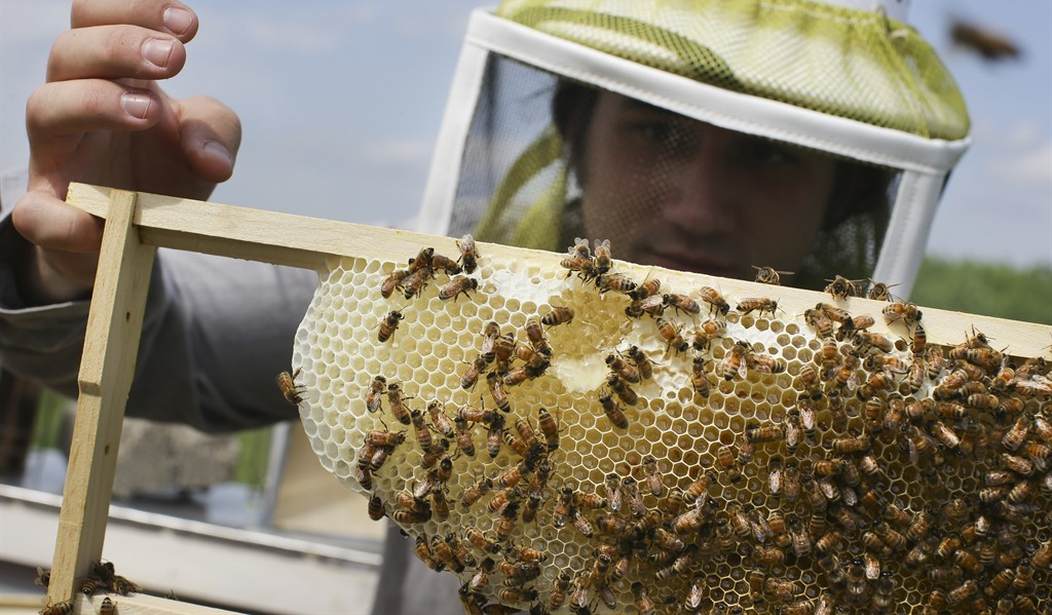Remember all the concern about colony collapse disorder? That’s a real problem that causes entire colonies of honeybees to simply abandon their hives. And that’s a real problem because the bees pollinate about 1/3 of the food we eat. Without them, our food supply would be in serious jeopardy. From an excellent story published today by Reason:
Time called it a “bee-pocalypse”; Quartz went with “beemageddon.” By 2013, National Public Radio was declaring “a crisis point for crops” and a Time cover was foretelling “a world without bees.” A share of the blame has gone to everything from genetically modified crops, pesticides, and global warming to cellphones and high-voltage electric transmission lines. The Obama administration created a task force to develop a “national strategy” to promote honeybees and other pollinators, calling for $82 million in federal funding to address pollinator health and enhance 7 million acres of land. This year both Cheerios and Patagonia have rolled out save-the-bees campaigns; the latter is circulating a petition calling on the feds to “protect honeybee populations” by imposing stricter regulations on pesticide use.
Colony collapse really is a real problem, but as Reason points out, America’s hard-working beekeepers have held the bee-pocalypse at bay. In fact, the number of honeybee colonies is up:
To see how effective beekeepers’ strategies have been in the face of colony collapse, examine the data from the U.S. Department of Agriculture’s annual beekeeper surveys. In 2016, there were 2.78 million honeybee colonies in the United States—16 percent more than when the disorder hit in 2006. In fact, there are more honeybee colonies in the country today than in nearly 25 years. Honey production also shows no pattern of decline. Last year, U.S. beekeepers churned out 161 million pounds of honey, slightly more than when colony collapse began.
And the market has been able to overcome this problem without even increasing prices in a significant way:
Using annual data collected from advertisements in the American Bee Journal, a beekeeping magazine, the researchers find no measurable increase in the prices of these bees after controlling for pre-existing trends. One reason is that supply is extremely elastic: Commercial queen breeders are able to rear large numbers of queen bees quickly, often in less than a month, to meet increased demand.
This is all pretty remarkable, but the invisible hand of the market has remained mostly invisible. This isn’t the kind of story that environmental journalists seem eager to tell. But even as the dubious save-the-bees campaigns continue, American beekeepers have already found a way to avert disaster.








Join the conversation as a VIP Member